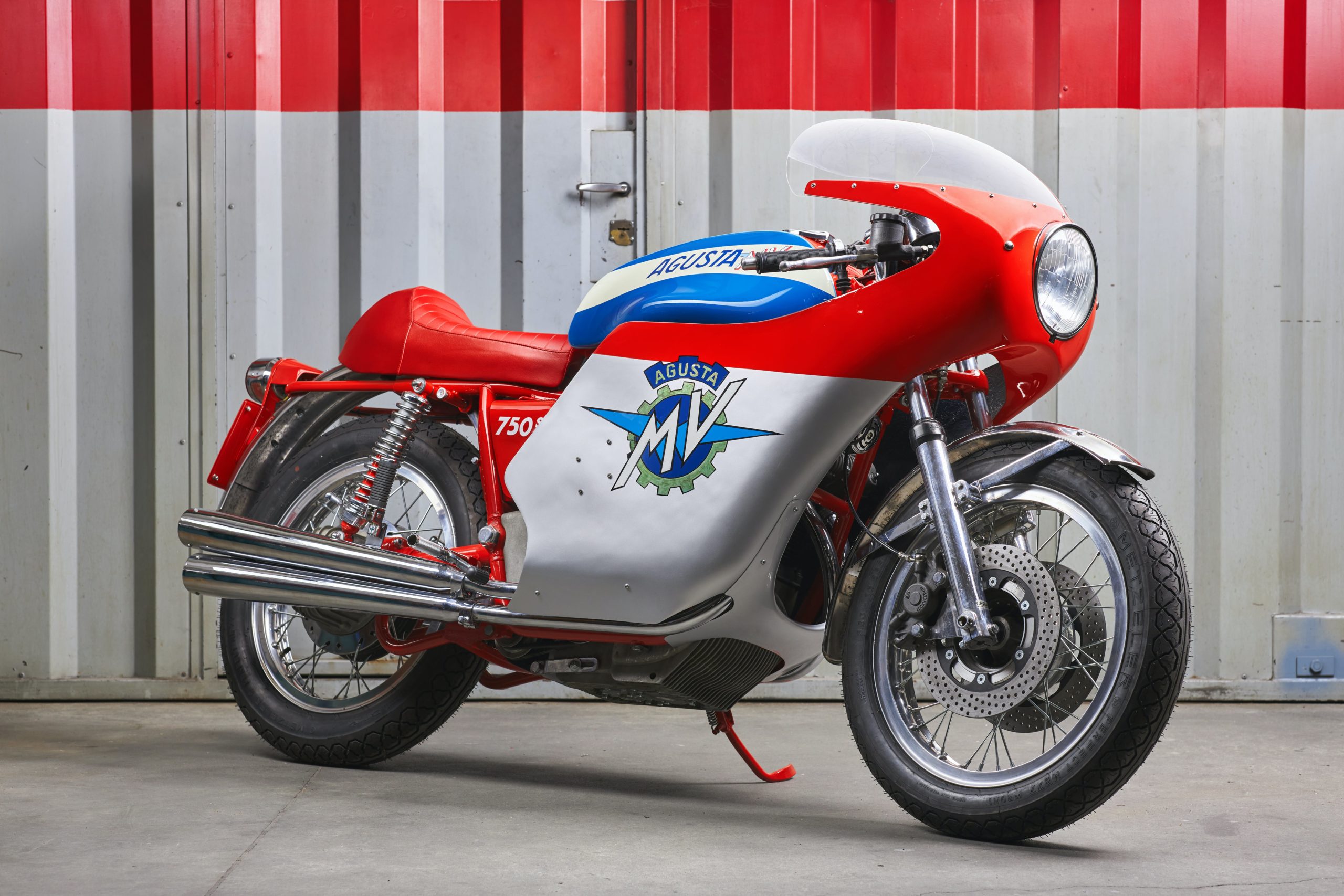The MV Agusta 750S was released in 1970, it was a superbike the world had been clamoring for for years but there was just one catch – it cost almost three times as much as a Honda CB750.
The crown jewel of the MV Agusta 750S was its engine, an advanced inline four cylinder all-alloy motor with double overhead cams, an electric starter, and unit construction including a 5-speed gearbox. It was one of the most technically sophisticated motorcycles in production at the time of its unveiling.
Fast Facts – The MV Agusta 750S
- Just 583 examples of the MV Agusta 750S would be built between 1970 and 1975, this wasn’t due to a lack of public interest or desire for the model, rather it was down to its exceptionally high price tag.
- MV Agusta had been developing transverse inline-four cylinder motorcycle engines since 1950, after poaching two of the top engineers from Gilera and closely replicating their race-winning inline-four.
- The new 500cc transverse inline-four proved to be just as successful as MV Agusta’s other motorcycles, helping the Italian company to win 270 Grand Prix motorcycle races, 38 World Riders’ Championships, and 37 World Constructors’ Championships.
- With its 743cc DOHC inline-four producing 72 bhp at 9,200 rpm the 750S had a top speed of 120 mph (200 km/h), making it one of the highest performing and most desirable production superbikes of its day.
The Italian Transverse Four
The true history of the MV Agusta 750S started all the way back to the 1920s, when two young Italians named Carlo Gianini and Piero Remor developed an advanced 500cc SOHC inline-four cylinder motorcycle engine capable of 28 bhp – an astonishing figure for the era.
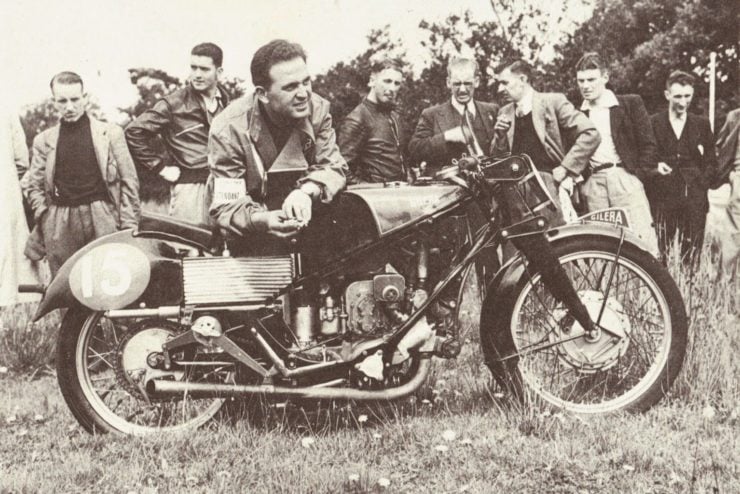

This wasn’t the first inline-four fitted to a motorcycle, but it was the first to be bolted in transversely, or sideways. Earlier motorcycles with inline-fours had them fitted longitudinally which resulted in a long wheelbase and insufficient cooling on the rear cylinders.
Gianini and Remor had proven the concept but they suffered from a dire lack of funding to continue development, fortunately aircraft engine manufacturer C.N.A. stepped in and took over the project – developing the engine into a DOHC inline-four with liquid-cooling and a supercharger, now capable of 80+ bhp.
Named the “Rondine” this would be the motorcycle engine that powered the 1st and 2nd place finishers in the 1935 Tripoli Grand Prix in Italy.
The Arrival Of Gilera And The Rondine
Shortly after the success of the Rondine-engined motorcycles in the Tripoli Grand Prix the design was bought by Guiseppe Gilera of the Gilera motorcycle company.
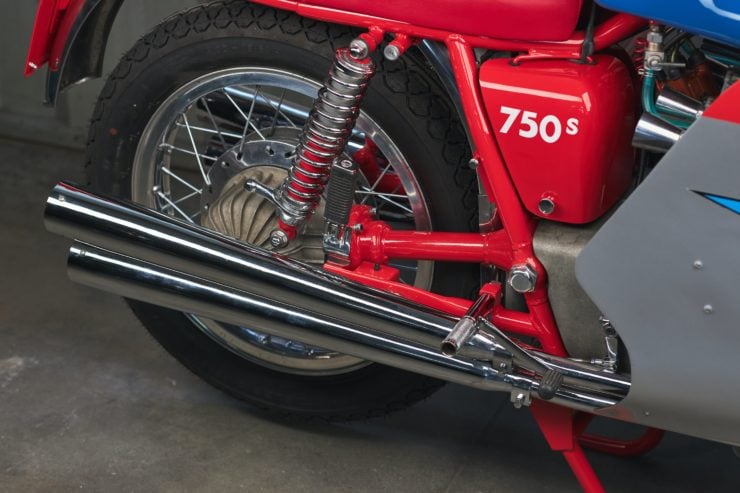

Gilera engineers developed a modified version of the Rondine engine and continued competing with it right up until the outbreak of WWII in Europe in 1939.
After the war a new transverse inline-four was developed from a blank sheet, it was one of the most advanced motorcycle engines in the world at the time and it powered Gilera riders to a slew of race and championship wins.
MV Agusta: Headhunters Extraordinaire
In 1949 MV Agusta successfully hired both the chief engine designer and chief mechanic away from the Gilera team – Piero Remor and Arturo Magni respectively. That’s the same Piero Remor who had co-developed the first transverse inline-four all the way back in the early 1920s.
This was a major coup for MV Agusta, the two men set about designing a 500cc transverse four that was so similar to their original Gilera design people wondered if parts could be swapped between them.
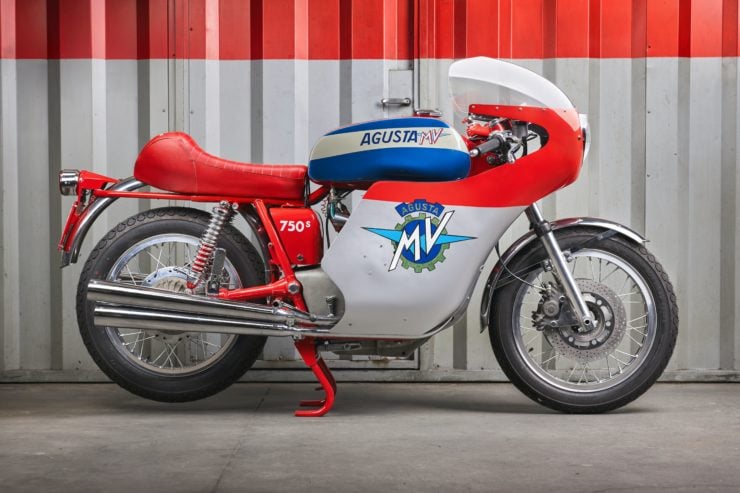

This new engine proved itself in competition time and again, along with the other MV Agustas it helped power the company to 270 Grand Prix motorcycle race wins, 38 World Riders’ Championship wins, and 37 World Constructors’ Championship wins.
MV Agusta 750S
For years fans of motorcycle grand prix racing had been clamoring for a street-legal production version of the all-conquering MV Agusta race bikes.
The company had held off on this, no one is quite sure why but the most likely reason seemed to be that they didn’t want privateer racers competing alongside factory race bikes and possibly beating them.
The company finally acquiesced in 1965, releasing the MV Agusta 600 – a cruiser type motorcycle fitted with a 600cc version of their famous transverse four. The bike wasn’t particularly attractive, it certainly wasn’t sporting, and it cost a small fortune.
Sales of the 600 were dismal and in 1970 the company finally gave the motorcycle riding public what they had wanted all along – the MV Agusta 750S.
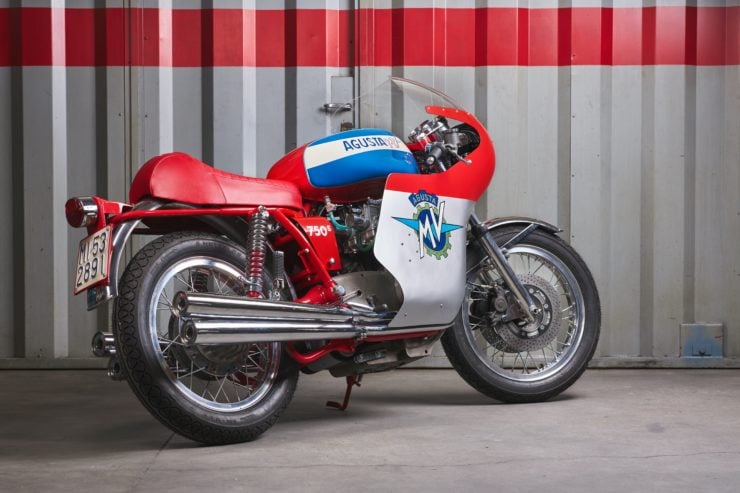

Now with its engine bored out to 743cc the DOHC transverse four produced 72 bhp at 9,200 rpm and had a top speed of 200 km/h or 120 mph. It cost three times the price of the Honda CB750, a Japanese motorcycle that had doubtless been inspired by the mighty Italian fours.
Sales were relatively slow, with a little over 100 a year being built for five years, 583 were built in total. Today they’re among the most collectible superbikes of the era.
The MV Agusta 750S you see here is a 1974 model the penultimate year of production. It’s finished in the classic red/blue/white livery of the company.
Perhaps most interestingly, it was recently restored to concours condition by none other than Giovanni Magni – the son of Arturo Magni, who was Racing Director for MV Agusta throughout the 1950s, ’60s and ’70s.
It’s due to be auctioned live online with the bidding starting in four days at the time of writing. If you’d like to see more, read more, or register to bid you can see the listing here.
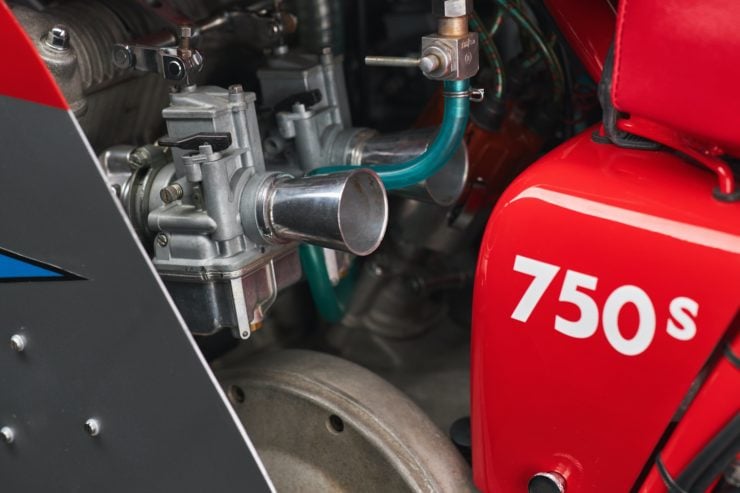
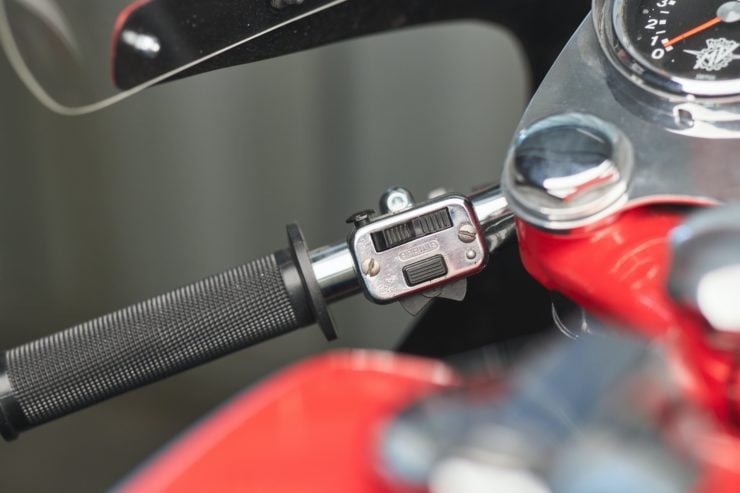
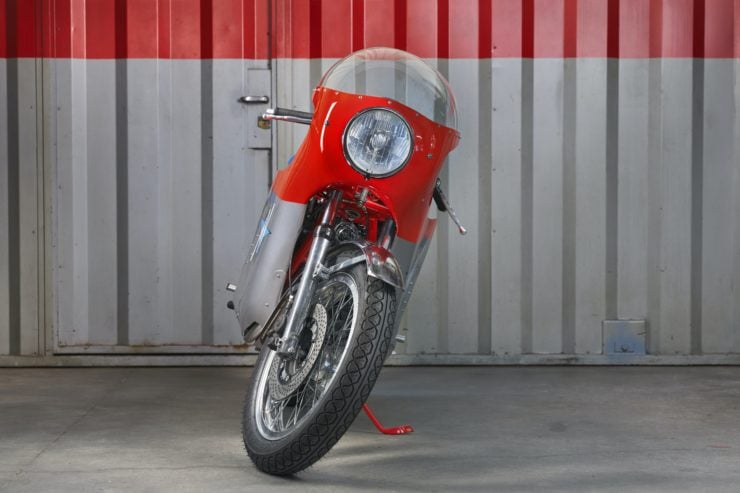
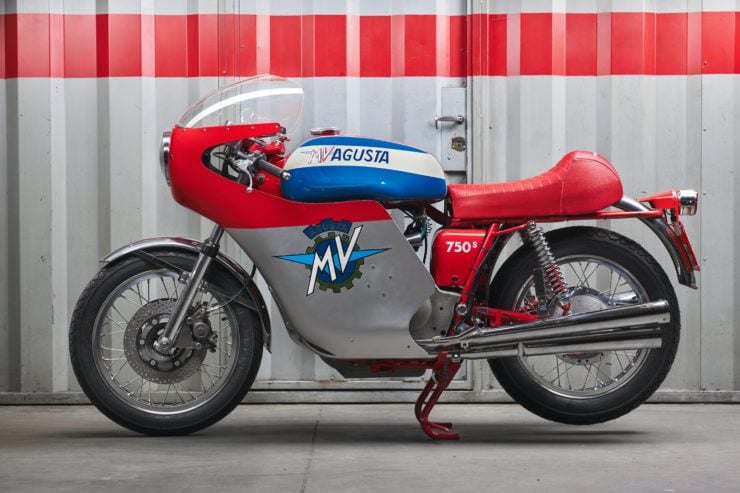

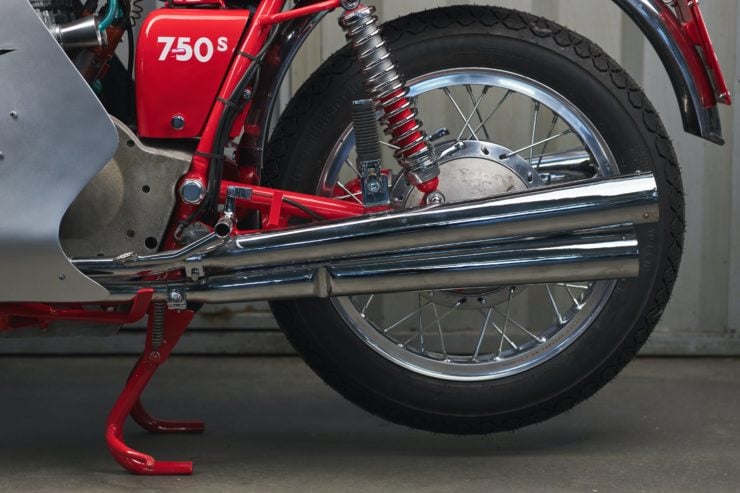
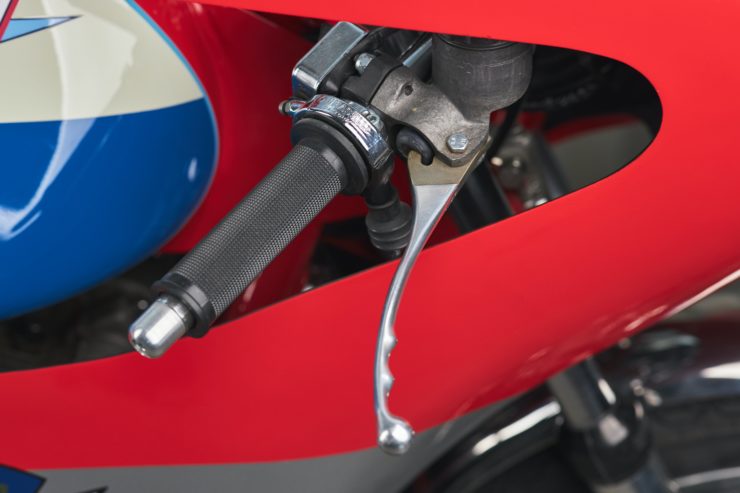
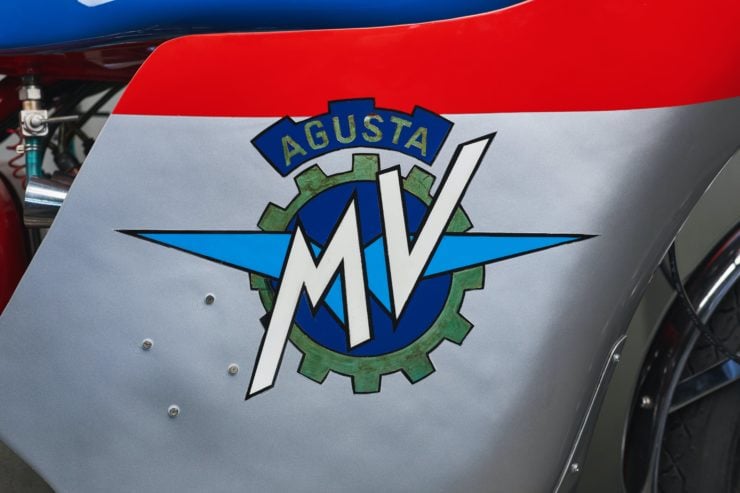
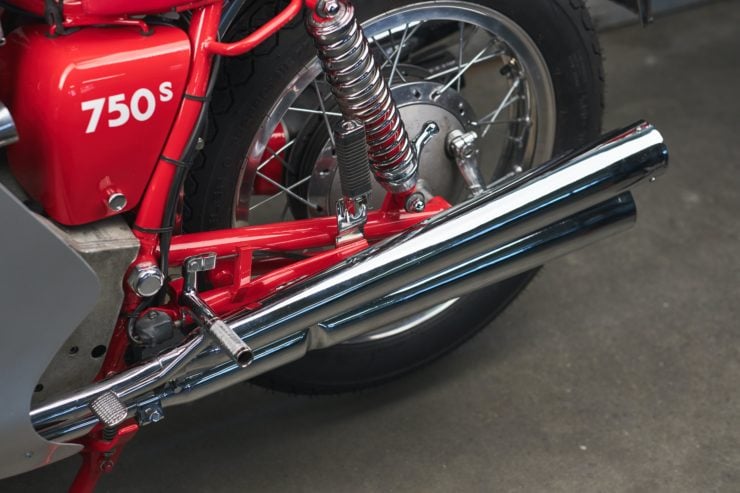
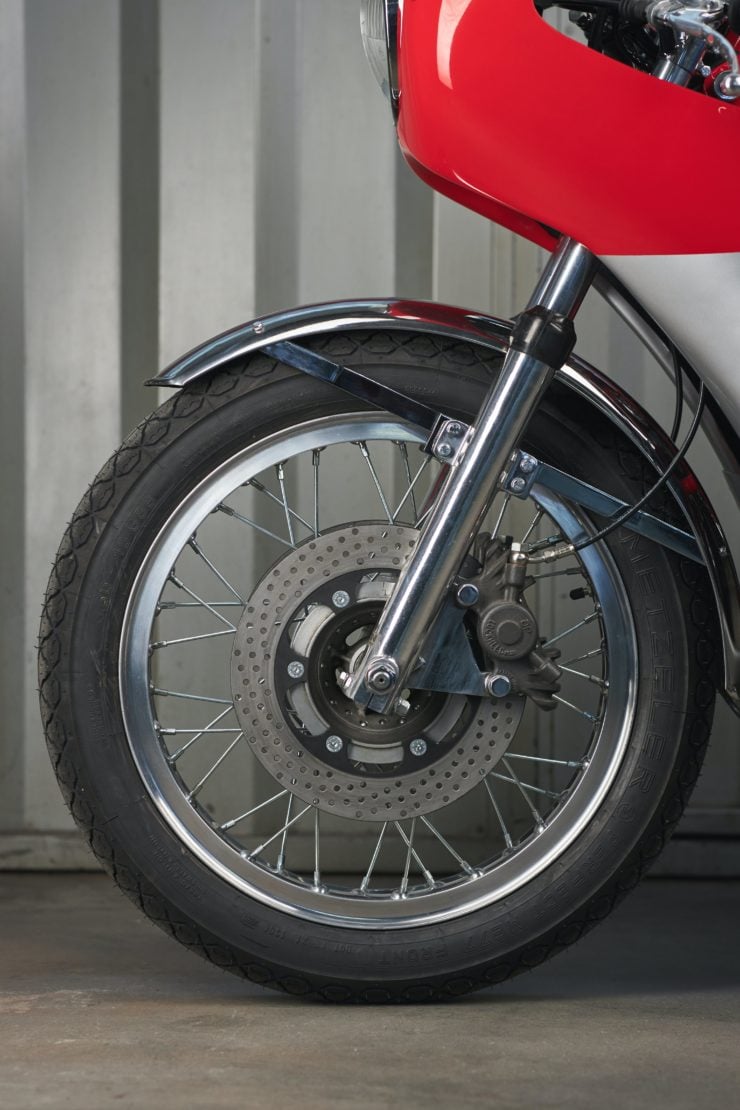
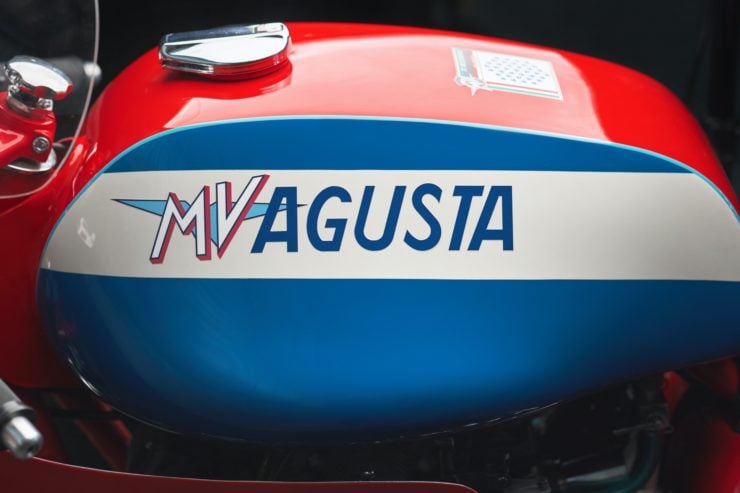
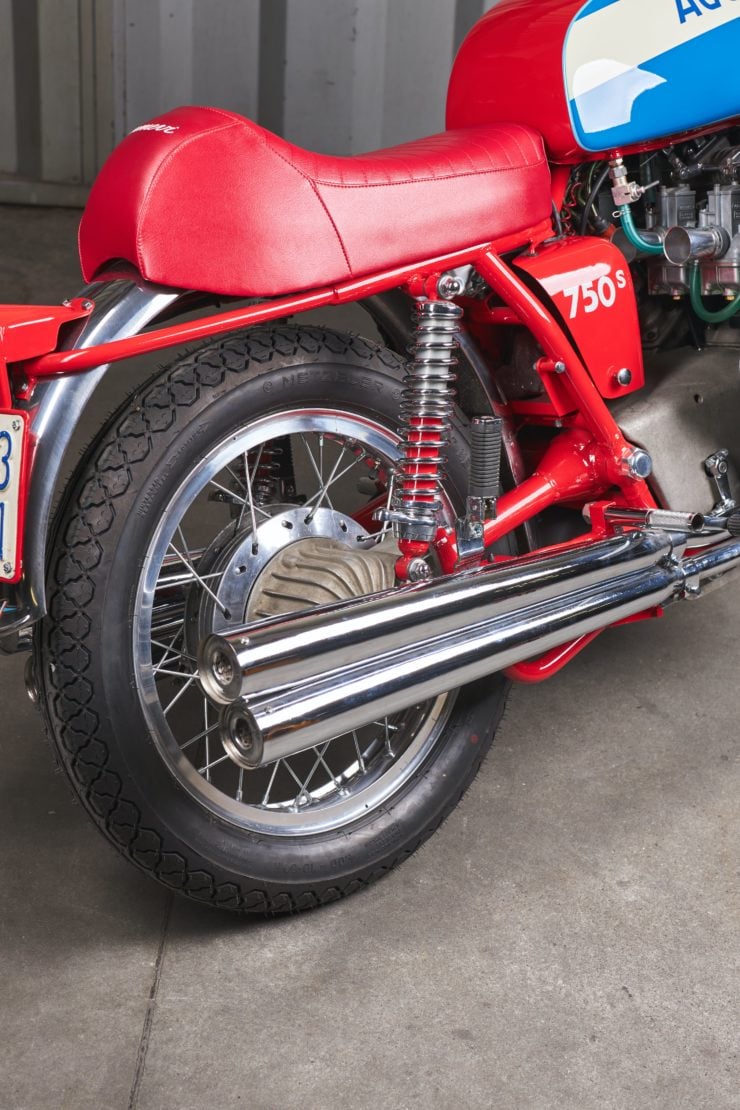
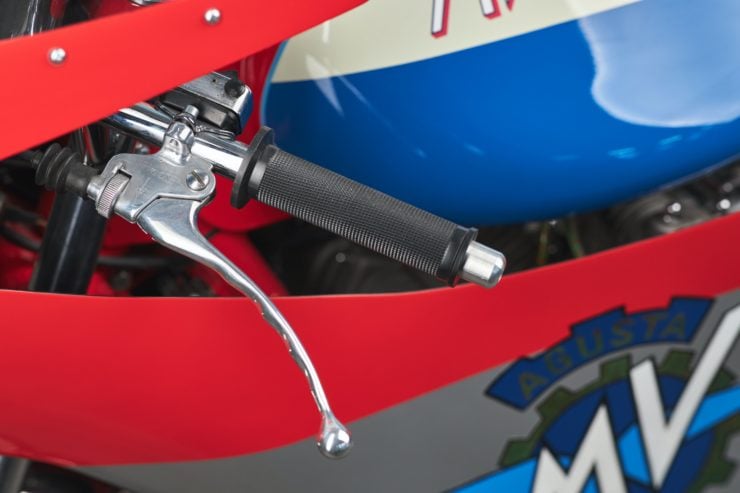
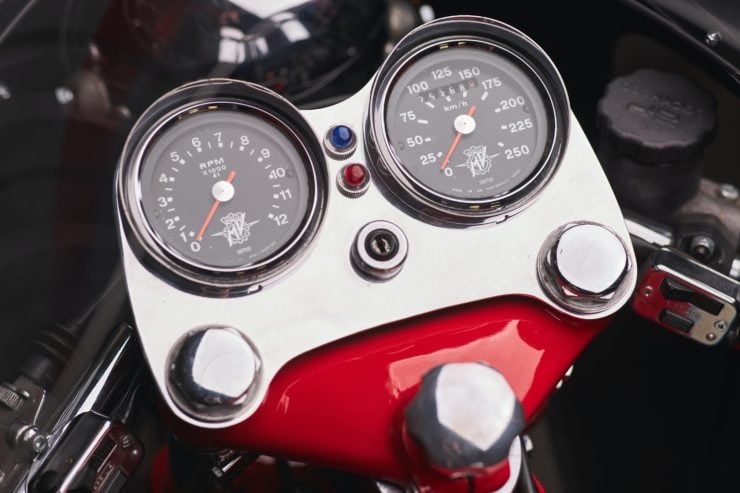
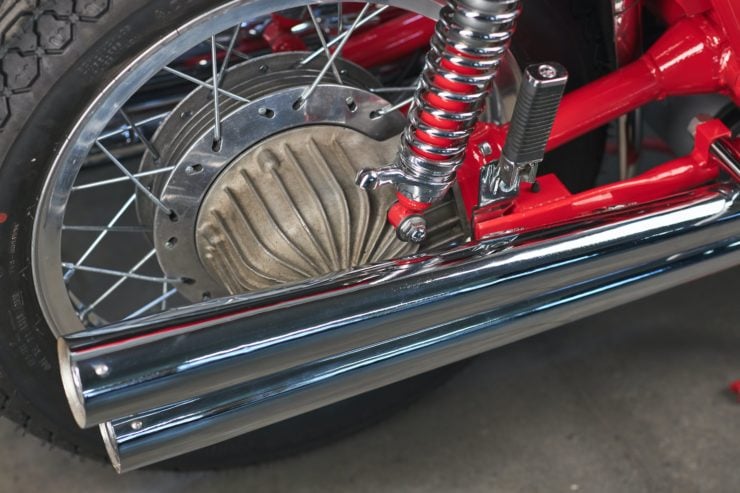
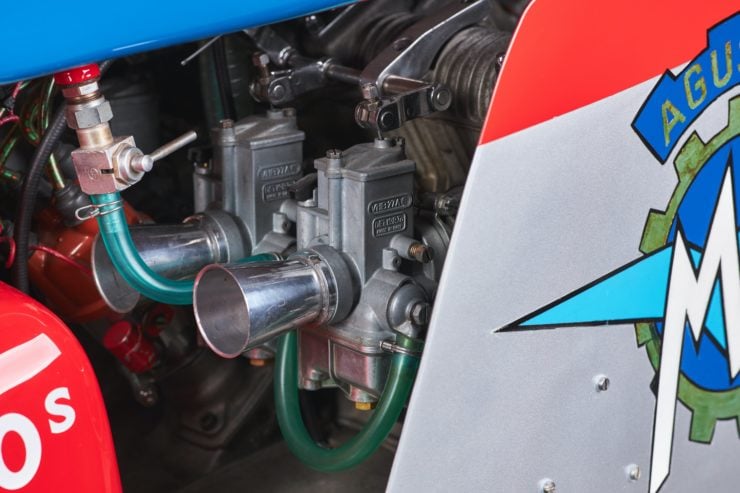
Images courtesy of Car & Classic

Ben has had his work featured on CNN, Popular Mechanics, Smithsonian Magazine, Road & Track Magazine, the official Pinterest blog, the official eBay Motors blog, BuzzFeed, and many more.
Silodrome was founded by Ben back in 2010, in the years since the site has grown to become a world leader in the alternative and vintage motoring sector, with millions of readers around the world and many hundreds of thousands of followers on social media.
